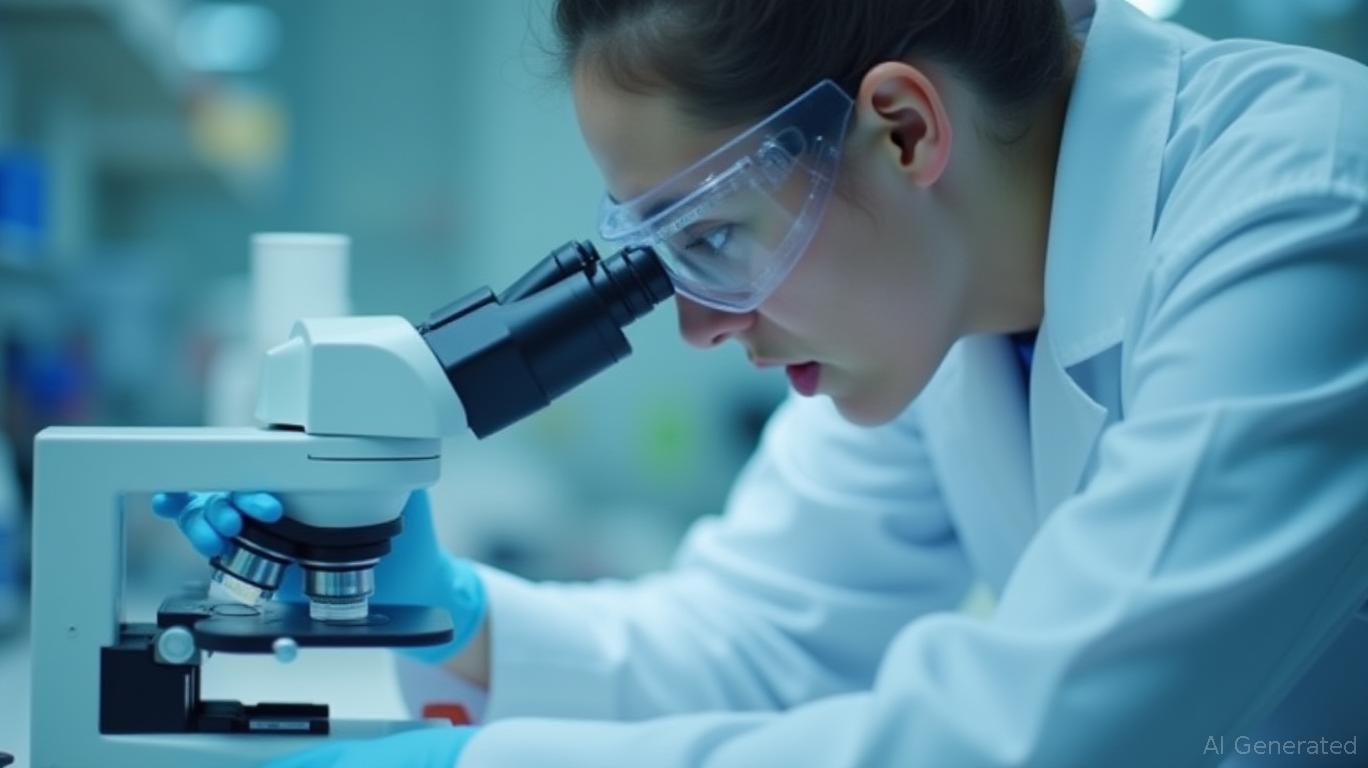Why Pfizer's 7% Yield and Hidden Turnaround Make It a Contrarian Gem
Pfizer (PFE) has long been a stalwart in healthcare, but its stock has been buffeted by looming patent expirations and shifting regulatory landscapes. Yet, beneath the noise of near-term headwinds lies a compelling investment case: a 7.5% dividend yield, a turnaround story fueled by cost discipline, and a robust pipeline poised to offset patent cliffs. For contrarian investors willing to look beyond short-term volatility,
presents a rare opportunity to buy high-quality income and growth at a discounted price.The Dividend: A Stable 7.5% Yield with Improving Sustainability
Pfizer's dividend yield currently sits at 7.5%, making it one of the highest among major pharmaceutical companies. Historically, the dividend has been a priority, with 16 consecutive years of increases. While the trailing payout ratio of 125% raises eyebrows, forward estimates suggest this will drop to 57% by 2026, as earnings rebound from the drag of patent losses.
The dividend's resilience is underpinned by Pfizer's fortress balance sheet and cash flow. Even as legacy drugs like Prevnar 13 and Ibrance face generic competition, the dividend is being stabilized by cost-cutting and new growth drivers. For income investors, this yield is both attractive and sustainable—if Pfizer can execute its turnaround.
The PEG Ratio: A Misleading Metric, but Forward Growth Tells a Different Story
Pfizer's trailing PEG ratio is listed as “N/A” due to a negative 5-year EBITDA growth rate (-2.6%). This reflects the drag from declining sales of pandemic-era products (e.g., Comirnaty) and the looming patent cliffs. However, forward estimates paint a brighter picture:
- Analysts project a forward PEG ratio of 0.62, assuming 2025–2027 EPS growth of 10–15%.
- The company's operational efficiency targets—$5.2 billion in cumulative savings by 2027—will boost margins even as top-line growth stabilizes.
The PEG's current distortion obscures Pfizer's undervaluation. At a trailing P/E of 7.6, the stock trades at a 40% discount to its 5-year average, reflecting excessive pessimism about its ability to navigate patent expirations.
Cost Savings: A $5.2 Billion Fire Drill
Pfizer's management has been aggressive in cutting costs to offset revenue declines. Key initiatives include:
- Manufacturing consolidation: Streamlining facilities to save $1.5 billion by 2027.
- R&D efficiency: Using AI to reduce preclinical timelines by 50% and cut costs by 35%.
- Workforce reductions: Part of a broader $5.2 billion savings target by 2027, including $3.5 billion from prior initiatives.
These moves are critical. While patent losses could drain $8 billion in annual revenue by 2027, cost savings will mitigate the impact, protecting margins and free cash flow.
The Pipeline: A Cancer-Focused Turnaround Machine
Pfizer's biggest hope lies in its oncology pipeline, bolstered by the $43 billion acquisition of Seagen. Key candidates include:
- Padcev (enfortumab vedotin): A bladder cancer ADC expected to hit $3 billion in peak sales, with expanded approvals in muscle-invasive bladder cancer.
- Vepdegestrant (PROTAC ER degrader): A breast cancer therapy showing superior efficacy in Phase 3 trials, targeting a $2 billion market.
- Lorlatinib (ALK+ NSCLC): A Seagen asset with a $3 billion peak sales potential.

Beyond oncology, Pfizer's mRNA platform (partnered with BioNTech) is advancing RSV and influenza vaccines, while its obesity drug pipeline—such as the Phase 2-winning oral GLP-1/GIP agonist—aims to capitalize on the $100 billion weight-loss market.
By 2027, 23 Phase 3 candidates could offset 80% of lost revenue**, turning the tide on patent cliffs.
Why the Near-Term Pain Is Overdone
Bearish sentiment is rooted in three fears:
1. Patent expirations: Prevnar 13 (2026), Ibrance (2027), and Eliquis (2028) will face generic competition.
2. Regulatory risks: The MFN pricing policy and ACIP shakeup (which briefly halted vaccine approvals) create uncertainty.
3. Erosion of pandemic-era revenue: Comirnaty sales have plummeted 70% since 2022.
Yet these risks are priced into the stock. Meanwhile, the positives—dividend sustainability, cost savings, and a blockbuster pipeline—are underappreciated.
Investment Thesis: Buy the Dip, Harvest Income and Growth
Pfizer is a classic value trap turned opportunity: a high-yield stock with a turnaround catalyst (the oncology pipeline) and a margin-protecting cost-cutting plan. Key catalysts to watch include:
- FDA approvals for Vepdegestrant and sigvotatug vedotin (lung cancer) in 2025–2026.
- ACIP's decisions on vaccine policies in late 2025.
- Progress on the $15 billion pipeline milestones, including $3 billion from Padcev by 2027.
Action Items:
- Buy on dips below $35: The stock trades at $40, but a pullback to $35 would offer a 20% upside potential by 2026.
- Hold for dividend + growth: The 7.5% yield provides income, while pipeline wins could boost EPS by 15–20% annually post-2027.
Conclusion: A Contrarian's Dream
Pfizer's 7.5% yield, cost discipline, and oncology-led pipeline make it a compelling buy at current levels. While near-term headwinds are real, they're already reflected in the stock's valuation. For investors willing to look past the noise, Pfizer offers a rare chance to own a high-quality dividend payer with a clear path to outperforming the market in the next three to five years.
DISCLAIMER: This article is for informational purposes only. Always conduct thorough research and consult a financial advisor before making investment decisions.

Comments
No comments yet